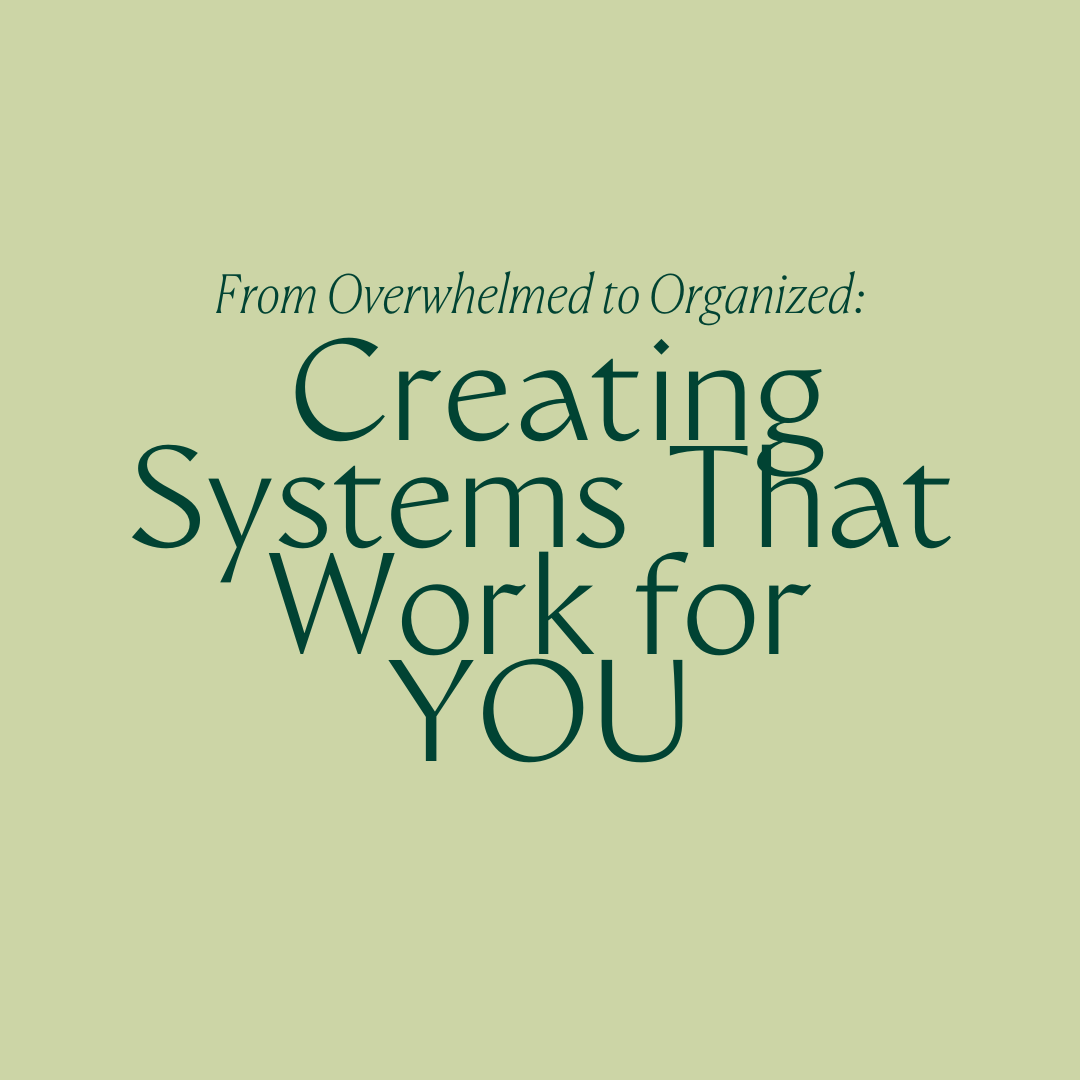HIDE
home
services
about
contact
Magnolia creative co.
We help female founders turn their
vision into action
maximize their impact
blog + case studies
streamlined project management
focused operational support.
vision into impact
and
through
and
and
maximize their impact
through
streamlined project execution
and
focused operational support.
May 11, 2025
I’m willing to bet that you didn’t start your business because you love managing endless to-do lists, scattered files, and never-ending emails—you started it because you’re passionate about your work and the impact it creates. But as your business grows, so do the moving parts—and suddenly, what used to feel manageable starts feeling overwhelming.
Sound familiar?
If you’re constantly putting out fires instead of making progress, struggling to keep up with the daily grind, or feeling like you’re drowning in tasks with no clear direction, it’s time to create systems that actually work for YOU.
The good news? You don’t need more hours in the day—you just need better systems.
Let’s break down how to move from overwhelmed to organized with streamlined, sustainable business systems that save you time, reduce stress, and allow you to focus on what truly moves the needle.
Step 1: Identify Your Biggest Bottlenecks
Before you start building systems, you need to figure out where things are breaking down.
Ask yourself:
- What tasks are taking up the most time each week?
- Where do things feel chaotic, inconsistent, or inefficient?
- Which areas of your business cause the most stress or frustration?
Common Bottlenecks for Entrepreneurs:
- Inconsistent client communication (endless email threads, unclear expectations)
- Messy workflows (no standard process for completing tasks)
- Disorganized project management (things getting lost in Slack or email)
- Lack of automation (doing the same tasks manually over and over)
Pro Tip: Spend one week tracking how you spend your time. You’ll quickly see where inefficiencies are eating up your day. (We personally love using Clockify.)
Step 2: Build Systems That Fit YOUR Business
A system isn’t just a tool—it’s a repeatable process that makes your business run smoother and faster. The key is choosing the right systems that align with your needs, rather than trying to fit your business into someone else’s framework.
The 5 Essential Systems Every Business Needs:
1. Client Onboarding & Communication
- Set up automated workflows for new clients (welcome emails, intake forms, FAQs).
- Use a CRM tool like HoneyBook to track client interactions.
- Create email templates for common responses to save time.
2. Task & Project Management
- Stop relying on sticky notes and move everything into a project management tool like Asana or ClickUp.
- Create task templates for repeatable processes (social media, content creation, client deliverables).
- Assign clear deadlines and responsibilities so nothing slips through the cracks.
3. Content & Marketing Organization
- Batch content creation instead of scrambling to post last-minute.
- Use a content calendar (we love a combo of Asana and Later) to plan posts in advance.
- Store branded graphics, captions, and hashtags in an organized content library.
4. Email & Inbox Management
- Use labels and filters to keep important emails organized.
- Create email templates for frequently asked questions.
- Set specific email response times so you’re not glued to your inbox all day.
5. Finance & Admin Organization
- Set up automated invoices (we use HoneyBook for this).
- Create a financial dashboard to track revenue, expenses, and profitability.
- Use a bookkeeper or accounting software to keep everything tax-ready.
Step 3: Automate & Delegate Where Possible
Just because you CAN do something doesn’t mean you SHOULD.
If a task is repetitive, manual, or taking too much of your time—it’s either a candidate for automation or delegation.
What to Automate:
- Email sequences (welcome sequences, follow-ups, thank-you emails)
- Appointment scheduling (Calendly or HoneyBook)
- Recurring invoices & payment reminders
What to Delegate:
- Admin & inbox management
- Social media scheduling
- Project management & client coordination
Need help figuring out what to delegate? Our Vision-to-Execution Accelerator helps you identify bottlenecks and build a custom roadmap for delegation and automation.
Step 4: Maintain & Adjust Your Systems Over Time
Systems aren’t set it and forget it. They need regular check-ins to ensure they’re working effectively.
How to Keep Your Systems Running Smoothly:
- Schedule a quarterly review to refine your workflows.
- Ask for team feedback—where are things getting stuck?
- Check automation reports—is everything running as expected?
- Revisit delegation—are you still handling tasks someone else could manage?
The goal is efficiency with flexibility—your systems should support your growth, not hold you back.
The Bottom Line: Stop Operating in Chaos & Start Running a Well-Oiled Business
The difference between struggling entrepreneurs and successful business owners isn’t talent—it’s systems.
- Clear processes free up your time.
- Automated workflows remove unnecessary busywork.
- Strategic delegation ensures you stay in your zone of genius.
You don’t have to do it all—you just need systems that work for YOU.
Ready to Get Your Business Organized?
If you’re tired of feeling overwhelmed and want to create sustainable systems that actually support your growth, our Vision-to-Execution Accelerator was designed for you!
Through this process, we’ll identify inefficiencies, create tailored systems, and give you a roadmap for scaling—without the stress.
👉 Apply now and start streamlining your business today!

From Overwhelmed to Organized: Creating Systems That Work for YOU
Behind every impactful brand is a strong support system. We’re here to be yours.
learn more about our services
vision into action
We help female founders turn their
vision into action
and
maximize their impact
HOME
services
About
contact
photography
BLOG + CASE STUDIES
copyright 2024,Magnolia Creative co. | Terms & COnditions | Privacy | sITE CREDITS
The Magnolia Minute
Don’t Miss the Latest Blog Posts, Helpful Tips, Useful Tools, & Updates!
through
streamlined project execution
and
focused operational support.
and
maximize their impact
streamlined project management
through
and